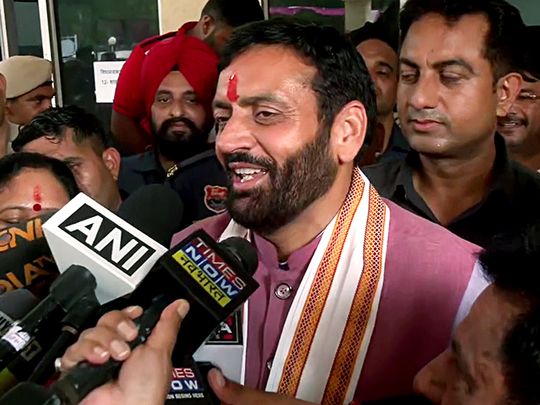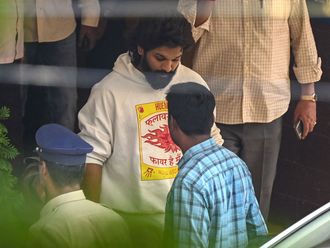
Haryana 2024 is not the only election where the Bharatiya Janata Party (BJP) won even though many expected it to lose. There have been other such elections: Gujarat 2017, Uttarakhand 2022, and both Madhya Pradesh and Chhattisgarh 2023.
With the exception of Chhattisgarh, all of those were elections where the BJP was already in power and defended itself against all odds. Many think the BJP does well only when playing an aggressive opposition force calling for “change”. Yet there are many examples where the BJP’s defensive batting has saved the day for its team.
Truth be told, even the BJP would have been surprised by the verdict. In the recent Lok Sabha elections, the BJP’s parliamentary seats fell from 10/10 to 5/10. Massive unemployment, angry youth who can’t get permanent army jobs, angrier farmers, discontent over government schemes such as a ‘family identity card’, and most of all unhappiness with former chief minister Manohar Lal Khattar were some of the reasons why the BJP was widely expected to lose.
The BJP won Haryana in 2014, and fell just 6 seats short of the 46 majority mark in 2019, largely through the ‘social engineering’ of uniting disparate castes and communities against the dominant Jat community. Jats are around 25% of the population, Muslims another 5%, Dalits another 20%. The fragmented, small OBC communities often don’t get mentioned when the demography of a state is understood.
My caste my CM
It was presumed that the BJP’s anti-Jat caste coalition must be fraying now that there was two-term anti-incumbency. The Congress tried to woo OBCs by raising the pitch for a “caste census” that would ensure equitable distribution of education and job quotas to OBCs.
Sensing the anti-incumbency, the BJP in March this year made CM Manohar Lal Khattar resign, later giving him a Lok Sabha ticket and making him a minister in the central government. The replacement was Nayab Singh Saini. The change was considered too little too late. Saini didn’t have time to come into his own and was seen as a proxy of Khattar. This reading of CM Saini may now be said to be incorrect: clearly, the Saini move worked.
To be fair, there were those who saw the OBCs sticking with the BJP. Reporting from Mahendragarh in the state’s Yadav belt, Lalmani Verma of the Indian Express found Yadav voters supporting the demand for a caste census but saying that their votes would depend on the candidates.
A local businessman, a Yadav, is quoted as saying that the Congress always picks a Jat chief minister and the BJP had given the state an OBC chief minister, besides wondering when the state would have a chief minister from his own Yadav caste.
The prospect of dominant Jats being back in power did not enthuse OBCs, if not others like Punjabis and some Dalits as well. To be fair to the Congress, they did give almost the same number of OBC candidates as the BJP. If the Congress gave a large number of tickets to their core voters Jats, the BJP gave a disproportionate amount of tickets to their core voters, Punjabis and upper castes.
The difference was one of leadership. The Congress failed to project OBC leaders who could have given OBCs a sense of fair representation.
When the macro gets tough, go micro
The lesson here is, when the macro gets tough, go micro. The macro picture looked bad for the BJP with poor Lok Sabha results and strong anti-incumbency. But they stuck to the basics, focusing on keeping their OBC flock together, doing small meetings from communities such as Pals and Kashyaps across the state.
Due to the poor Lok Sabha results they had fewer rallies of PM Modi this time as compared to the last Haryana assembly election. They played down Brand Modi and made Khattar almost invisible. It was a Saini election.
This is where the BJP’s organisational strength helps. They learnt from their Lok Sabha mistakes, engaged with their demotivated cadres again and repaired their relationship with parent organisation RSS. By contrast, the Congress has not been able to constitute district and block committees in the state for the last ten years! It is incredible that the Congress won 39% votes without having even 1/10th the BJP’s organisational strength.
Small parties and independent candidates have historically done well in Haryana and their space has actually reduced this election to around 20% or so. If these small parties and independents have mostly damaged the Congress, it is because of the Congress’ inability to woo the swing voter, through lack of OBC leadership and lack of boots on the ground.
The BJP since 2014 stands on three legs: Brand Modi, party organisation and OBC consolidation. The last two are silent and often underrated strengths.
Like the BJP’s decline in the Lok Sabha, the party’s resilience in the Haryana assembly election underlines how difficult it is to read the mood of the large but fragmented, aspirational yet silent OBC voter.
It isn’t just the BJP which pulls of surprise victories. Another example is that of the Trinamool Congress in West Bengal in 2021. Once again, playing defensive, going micro, working on the cadres to keep core voters intact had helped them.










